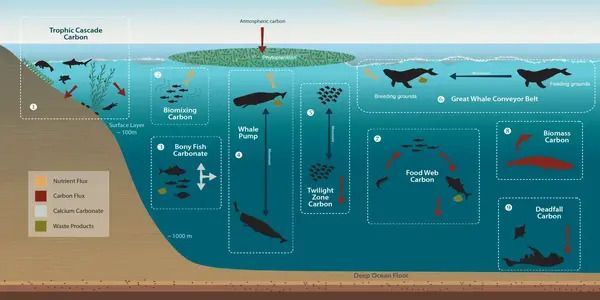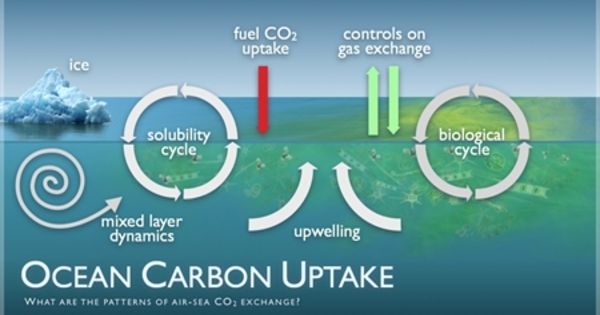Coastal seas are a complicated transition zone between the world’s two main CO2 sinks, land and ocean. For the first time, ocean experts have successfully investigated the coastal ocean’s involvement in a continuous model representation. The research, coordinated by Dr. Moritz Mathis from the Cluster of Excellence for Climate Research CLICCS at Universität Hamburg and the Helmholtz-Zentrum Hereon, demonstrated that the intensity of CO2 uptake is greater in coastal seas than in the ocean. This is supported by research published in the journal Nature Climate Change.
To combat the ongoing climate change, it is critical to understand how CO2 emissions are distributed. And what exchange processes between the atmosphere, ocean, and land control the distribution? Recent methodological improvements have enabled more flexible incorporation of physical and biogeochemical processes in climate models, as well as higher resolution capture of local regions.
Researchers from the Cluster of Excellence “Climate, Climatic Change, and Society” (CLICCS) have taken advantage of this. In collaboration between Helmholtz-Zentrum Hereon, Universität Hamburg, Max Planck Institute for Meteorology and University of Bern, they have developed a new type of ocean model that can efficiently simulate the transport, storage and turnover of carbon in the global coastal ocean for the first time: ICON-Coast.
Our findings suggest that rapid plankton growth is critical to increased CO2 uptake in the coastal ocean, and that this uptake is greater than in the open ocean. This is due to climate-induced circulation changes and increased fertilizer inputs from rivers.
Dr. Moritz Mathis
More realistic representation
So far, the two largest carbon reservoirs on Earth, land and ocean, have been treated independently in computer climate science. Carbon transmission into coastal oceans has been disregarded, such as through river inputs, coastal erosion, and tidal flats. Climate models were designed for global scales, therefore coast-specific phenomena could only be treated in a limited and spatially coarse manner.
ICON-Coast’s more realistic representation and higher resolution in the transition zone between land and ocean open up new possibilities for investigating the effects of climate change on coastal areas and marine ecosystems, such as risks from heat waves, storms, and global sea level rise.

The coastal ocean is small but significant
It is known from observations that the increase in atmospheric CO2 concentration enhances the uptake of CO2 into the ocean, thereby significantly mitigating climate change. Simulations with ICON-Coast now shed light on the causes and enable understanding of the function of coastal and marginal seas in the Earth’s climate dynamics:
“Our findings suggest that rapid plankton growth is critical to increased CO2 uptake in the coastal ocean, and that this uptake is greater than in the open ocean. This is due to climate-induced circulation changes and increased fertilizer inputs from rivers,” explains study leader Dr Moritz Mathis. The researchers also predict that the intensity gap between coastal seas and the open ocean will widen further as CO2 emissions rise.
All the more important: “Coastal management strategies that disturb biological production could weaken the ocean’s CO2 uptake and make climate protection more difficult,” according to Mathis. “With the new model, we can also test approaches to CO2 avoidance such as offshore wind energy for their effectiveness and undesirable side effects.”
















